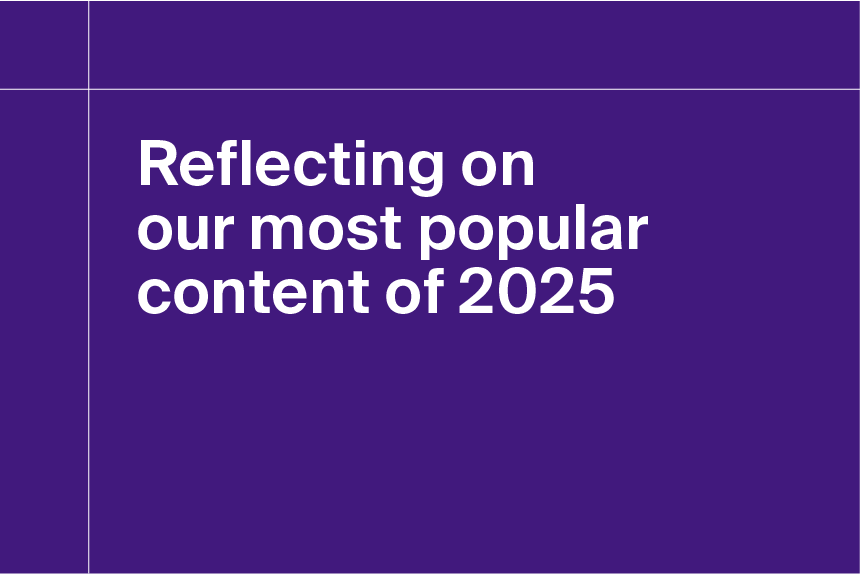Physicians work hard to provide care that delivers the best possible outcomes to their patients. Unfortunately, their efforts haven’t always been appropriately recognized.
I don’t mean that doctors are poorly compensated—although, like many workers, their salaries aren’t keeping up with inflation. The issue here is that they’re often incentivized to deliver more care rather than more impactful care.
Under the fee-for-service model that has governed care reimbursement in the U.S. for most of our country’s history, providers are paid per procedure or service provided. This means that the money is in volume, and many providers’ revenue streams are tuned to high-volume services: office visits, outpatient procedures, testing, etc.
Recent trends in healthcare’s public and private sectors suggest this is changing (if not as quickly as many physicians, patients, and activists would like). New tech, governmental intervention, and shifting patient and provider preferences are creating new opportunities for value-based care every day.
Keep reading to learn more about these trends.
Payment programs incentivize outcomes, cost-effectiveness
The U.S. government continues to make efforts to steer our healthcare system toward a value-based care model. For instance, the Centers for Medicare and Medicaid Services’ value-based programs reward providers for the quality of care they give to Medicare patients instead of the quantity of care.
While these programs are focused on patient and population outcomes, they also incentivize cost-savings to patients, health systems, and the government. For instance, under its Hospital Value-Based Purchasing (VBP) Program, CMS scores and rewards hospitals on their ability to reduce costs to Medicare, along with measures like mortality, healthcare-associated infections, patient safety, and patient experience.
CMS has implemented eight valued-based programs since 2008, the most recent being its Alternative Payment Models program (built around high-quality, cost-effective care for specific conditions, populations, and care episodes). But in a 2021 Health Affairs report, CMS leadership suggested scaling back and simplifying its value-based models could improve provider participation and reduce confusion around “opposing, even conflicting incentives.”
CMS may be the biggest payor on the field, but private payors like Humana, Blue Cross Blue Shield, and MVP Health Care have moved the needle toward outcome-focused reimbursement by implementing value-based contracting and care agreements centered on chronic disease management. With around 80% of physicians expressing interest in these models, we should expect more private payors to launch programs of their own in the near future.
Evolving tech makes high-quality care a little easier
In the last few years, certain technological advancements and innovations have streamlined the implementation of value-based care. Whether by supporting care delivery, optimizing patient engagement, or facilitating data-driven decision-making, tech is playing a major role in the shift away from fee-for-service models.
Unsurprisingly, telehealth is chief among these technologies. The ability to deliver care remotely not only opens new revenue opportunities for providers, but also enables long-term, low-impact management of chronic health concerns with less overhead than a fully in-person health management plan.
With fewer overhead costs (and fewer trips to the emergency room due to unaddressed conditions), telehealth saves money for the patient, provider, and payor alike. Plus, it boosts patient engagement, an important criterion for certain CMS programs.
While not as flashy as telehealth technology, electronic health records (EHRs) continue to support value-based care by streamlining access to patient data and making that data easier to share in collaboration with other providers. Improved care coordination means patients receive the right care at the right time, reducing medical errors and unnecessary expenses, and improving patient outcomes.
According to Grand View Research, the global EHR market is expected to reach $38.5 billion by 2030, the global EHR market is growing. In the U.S., CMS incentivizes EHR usage through the Medicare Promoting Interoperability Program for hospitals. And starting in 2023, health IT products like EHRs must comply with the 21st Century Cures Act final rule. This rule ensures secure access to health information for patients and providers by standardizing the application programming interfaces (APIs) used to transmit and utilize that information.
Back to the flashier side of healthcare tech, artificial intelligence (AI) and machine learning (ML) are also helping providers cut costs and improve patient experiences.
AI and ML can be used to automate repetitive tasks, identify high-risk patients, and develop predictive models that help providers anticipate and prevent adverse health outcomes. They can rapidly process and diagnose medical imaging and other test results. Plus, these technologies can even be used to spot opportunities for cost savings and optimize the use of critical resources and supplies.
In 2022, about one-third of providers said they were actively using AI/ML, but 40% planned to incorporate the tech within the next two years.
Data and analytics continue to drive efficiency
Every patient encounter, whether in person or over the internet, produces a ton of data. Technologies like remote patient monitoring bring even more data into the mix—and savvy physicians aren’t letting all that information get stale in an EHR.
In 2020, Statista estimated the global healthcare sector generated more than 2.3 zettabytes of data. That’s 2.3 trillion gigabytes of patient information, descriptive text, internet of things data, and more.
While only about 19 terabytes of that is purely clinical data, there’s still plenty for providers and other healthcare organizations to leverage. And of course, that number is only going to grow as populations expand and more providers enter the field.
By analyzing large volumes of healthcare data, healthcare organizations can identify trends, patterns, and insights that can help them improve care quality, reduce waste and inefficiencies, and identify cost-saving opportunities—all hallmarks of value-based care.
Data analytics—especially when paired with AI/ML—can help providers identify high-risk patients in need of costly medical interventions. By identifying these patients early on, healthcare organizations can provide targeted interventions that can prevent complications, reduce hospital readmissions, and improve patient outcomes.
The only limits to these analytics are the quality of data on hand and the analyst’s imagination. With the right data and the right tools, providers can see what’s driving wait times in their facilities, spot barriers to care coordination, track the effectiveness of their interventions, and make more informed decisions around resource allocation and care delivery.
As demand for providers increases, understaffed practices and networks will need to leverage the growing volume of data to do more with less and maximize the value of their care—along with their reimbursement rates.
Start using data to deliver greater value
Healthcare is evolving, and hopefully your strategy is evolving with it. To thrive in a value-based care environment, you’ll need data, analytics, and the expertise to put them to work for your organization.
Don’t burn valuable time and resources trying to manually wrangle and make sense out of terabytes of clinical data. Instead, see how AI-enhanced healthcare commercial intelligence can help you deliver greater value and reduce costs. Sign up for a free trial today.




